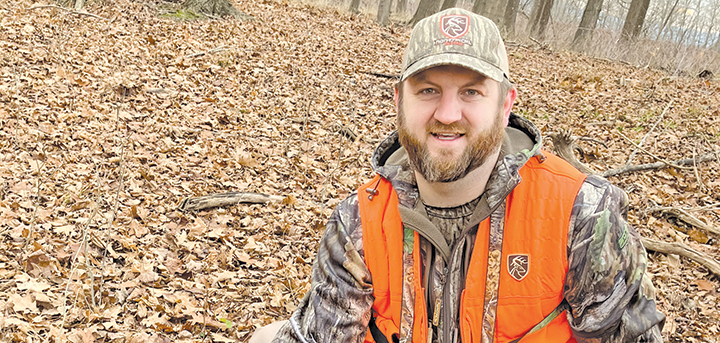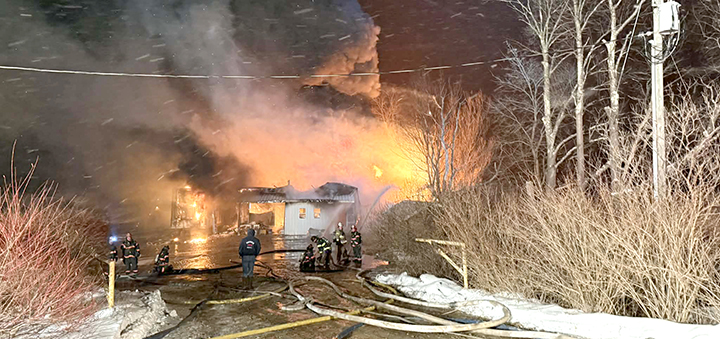Outdoor Chenango: End the hunting season with a good cleaning
Regular firearms season has ended and the muzzleloader season ends this upcoming Tuesday (the 17th) or on New Year’s Day if you go out during the Holiday Hunt season.
With these closures, it’s time to put things away until next year. Of all your gear, your firearm is likely the most expensive tool you have so it makes the most sense to take good care of it. After a season of use, it needs a good cleaning, inside and out, before it is put into storage for the next few months.
The first thing to do is to make sure you have all the right supplies to get the job done. You will need a rod, a bronze brush, and a slotted or pointed jag. Most basic gun cleaning kits will have these. Get the brush and jag ends so that they match the caliber/gauge of your firearm. Next, get some cleaning patches. These will be labelled with a caliber range they are good for. Either get the ones that fits your firearm or go bigger and you can trim them down. This works well if you have multiple firearms to deal with. Finally, you will want bore-cleaner and an anti-rust oil. If you are cleaning a black powder gun, you will want bore-cleaner that is designed for cleaning muzzleloaders as it will better clean out powder residue.
Make sure your firearm is unloaded before starting to work on it. I like to start with a dry patch first to get as much loose stuff from inside of the barrel as I can. Next, send the brush down to break loose crud and soot. Follow this with a patch saturated in bore cleaner. Take your time with this so that is has time to get the entire inside of the barrel. Look through the barrel to see how clean the rifling is. If you need to, alternate between the brush and saturated patches until the inside of the barrel looks clean. Now start using dry, clean patches to clean up any cleaner and soot until your patch comes out of the barrel clean. To prevent rusting in the barrel, I put a patch saturated in rust-preventing oil such as RemOil down the barrel and then just one pass with a dry patch. When working with gun cleaning chemicals, make sure the area is well ventilated.
Another option that I highly recommend is a cleaning snake. This is an all-in-one tool that you feed from the action down the barrel and pull out the barrel. The snake has brush bristles built in followed by oversized nylon material that fills the entire barrel so it cleans everything as you pull it down the barrel. What is nice with these is that the crud in the barrel is brought out the muzzle instead of pushed into the action the way a typical cleaning rod works. You can put cleaning products on the snake and after a few uses, you can hand wash the snake using dish soap and warm water.
For the exterior of the firearm, look for any surface rust or pitting. If you see any, focus on this area first. Sometimes a cotton rag along with some oil will take care of it. If it doesn’t, get some fine steel wool and use it with gun oil to smooth the area out and remove the rust. If the spot is too bad, consider taking it to a gunsmith to have it removed and the area re-blued. If the exterior okay, use a cotton rag to put a light coating of oil on any metal surface. If your firearm has a wood stock, do not use oil on the stock and be careful on areas where the wood meets metal. The oil will cause the wood to swell and can lead to cracking in the stock. A common misconception is that firearms with stainless barrels will never rust. Stainless barrels take longer to rust, but they will rust, so make sure you don’t put off cleaning your firearm with a stainless barrel.
Once a firearm is cleaned and oiled, it is ready for storage. Once it is stored, moisture is the top enemy of firearms. You can purchase silica gel desiccants that absorb moisture out of the air to put into your gun safe. The same material is what comes in the little packets that are in the box when you buy new shoes. Whenever I get new shoes I take that packet and toss it in my gun cabinet or into my gun cases I use to transport firearms to and from hunting locations. Try to check on your firearms periodically while they are stored to make sure they aren’t developing any surface rust and that the inside of the barrel isn’t rusting either.








Comments